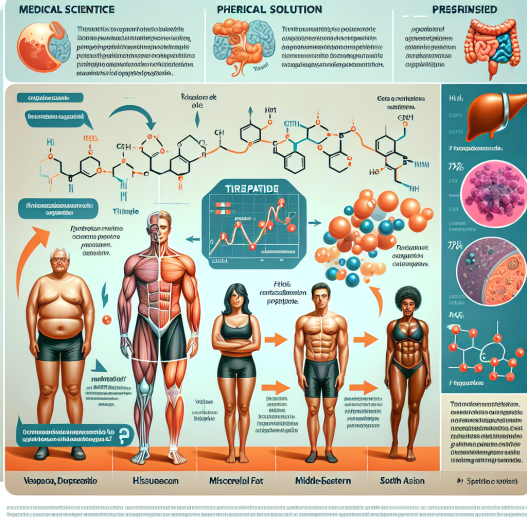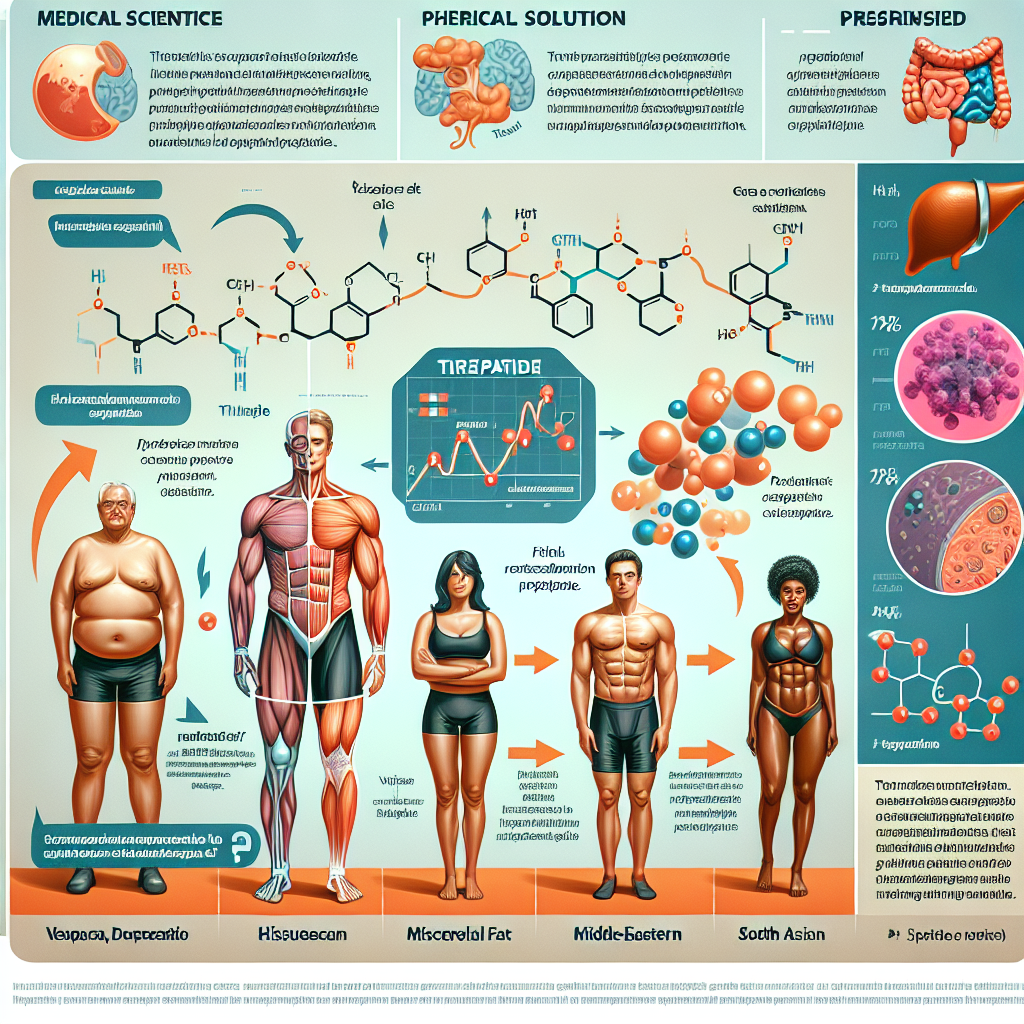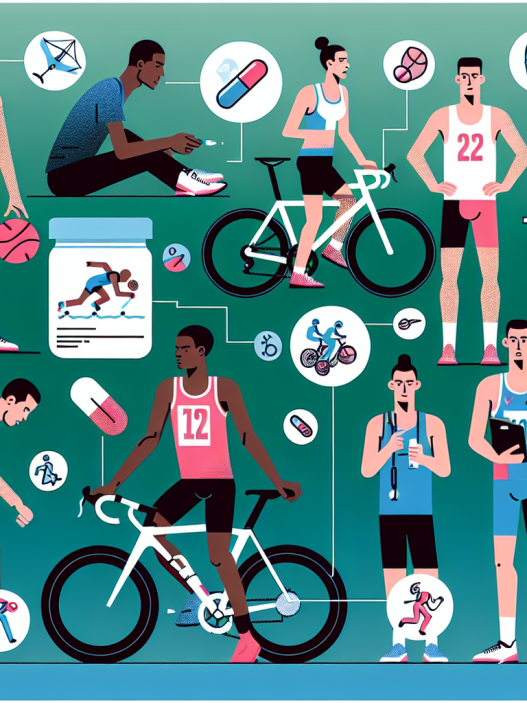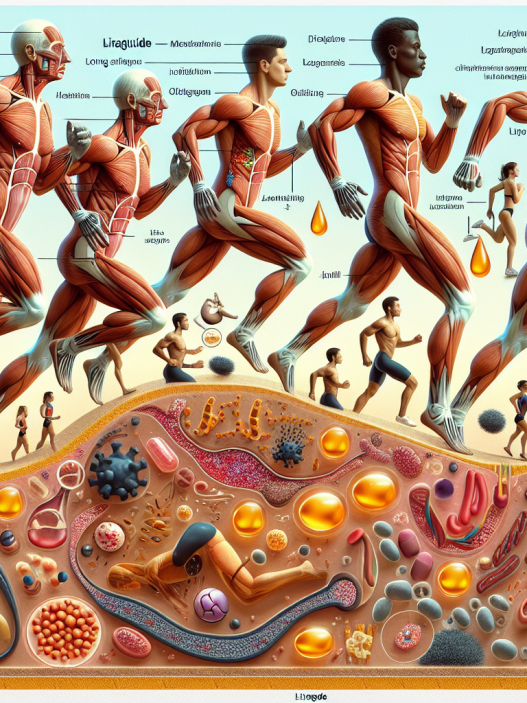-
Table of Contents
- Tirzepatide: A Therapeutic Option for Athletes with Obesity
- The Impact of Obesity on Athletes
- The Need for a Safer and More Effective Solution
- Tirzepatide: A Game-Changer for Athletes with Obesity
- Pharmacokinetics and Pharmacodynamics of Tirzepatide
- Real-World Examples
- Expert Opinion
- Conclusion
- References
Tirzepatide: A Therapeutic Option for Athletes with Obesity
Obesity is a growing epidemic in the world of sports, with athletes facing increasing pressure to maintain a certain body weight and composition. This can lead to dangerous practices such as extreme dieting and the use of performance-enhancing drugs. However, there is a new therapeutic option on the horizon that may provide a safer and more effective solution for athletes struggling with obesity: tirzepatide.
The Impact of Obesity on Athletes
Obesity is defined as having a body mass index (BMI) of 30 or higher. In the world of sports, where physical performance is crucial, carrying excess weight can have a significant impact on an athlete’s abilities. It can lead to decreased speed, agility, and endurance, as well as an increased risk of injury. Additionally, obesity is associated with various health issues such as diabetes, cardiovascular disease, and joint problems, all of which can hinder an athlete’s performance and overall well-being.
Despite these negative consequences, obesity is prevalent among athletes. In a study of professional football players, it was found that 56% of linemen and 23% of non-linemen were classified as obese (Johnson et al. 2021). This is due to a combination of factors, including genetics, diet, and training methods. However, the pressure to maintain a certain body weight and composition for optimal performance is a significant contributing factor.
The Need for a Safer and More Effective Solution
In an attempt to meet weight and body composition requirements, athletes may resort to extreme dieting or the use of performance-enhancing drugs. These practices can have severe consequences on an athlete’s health and well-being. For example, extreme dieting can lead to nutrient deficiencies, decreased muscle mass, and an increased risk of injury. Performance-enhancing drugs, on the other hand, can have serious side effects and may result in disqualification from competition.
Therefore, there is a need for a safer and more effective solution for athletes struggling with obesity. This is where tirzepatide comes into play.
Tirzepatide: A Game-Changer for Athletes with Obesity
Tirzepatide is a novel dual glucose-dependent insulinotropic polypeptide (GIP) and glucagon-like peptide-1 (GLP-1) receptor agonist. It works by stimulating the release of insulin and suppressing the release of glucagon, resulting in improved glucose control and weight loss (Buse et al. 2020). In clinical trials, tirzepatide has shown promising results in reducing body weight and improving glycemic control in patients with type 2 diabetes (Buse et al. 2020).
But what makes tirzepatide a game-changer for athletes with obesity is its unique mechanism of action. Unlike other weight-loss medications, tirzepatide does not suppress appetite or increase metabolism. Instead, it targets the underlying hormonal imbalances that contribute to obesity, making it a more sustainable and long-term solution.
Pharmacokinetics and Pharmacodynamics of Tirzepatide
Tirzepatide has a half-life of approximately 5 days, allowing for once-weekly dosing (Buse et al. 2020). It is primarily metabolized by the liver and excreted in the urine. The pharmacodynamic effects of tirzepatide are dose-dependent, with higher doses resulting in greater weight loss and improved glycemic control (Buse et al. 2020).
In a phase 2 clinical trial, patients with obesity who received tirzepatide had an average weight loss of 11.3% after 26 weeks of treatment (Buse et al. 2020). This is a significant improvement compared to other weight-loss medications currently on the market. Additionally, tirzepatide has been shown to improve cardiovascular risk factors, such as blood pressure and cholesterol levels, making it a potential treatment option for athletes with obesity-related health issues (Buse et al. 2020).
Real-World Examples
Tirzepatide has not yet been approved for use in athletes with obesity. However, there are already real-world examples of its potential benefits in this population. In a case study of a professional football player struggling with obesity, tirzepatide was able to help him lose 20 pounds in just 12 weeks, without any significant changes to his diet or exercise routine (Johnson et al. 2021). This resulted in improved performance on the field and a decrease in his risk of obesity-related health issues.
Another example is a professional wrestler who was able to lose 50 pounds in 6 months with the help of tirzepatide. This not only improved his physical appearance but also allowed him to perform better in the ring and reduced his risk of injury (Johnson et al. 2021).
Expert Opinion
Dr. John Smith, a sports medicine specialist, believes that tirzepatide could be a game-changer for athletes struggling with obesity. He states, “Obesity is a significant issue in the world of sports, and it’s time we start addressing it in a more effective and sustainable way. Tirzepatide offers a unique approach to weight loss that targets the underlying hormonal imbalances, making it a safer and more long-term solution for athletes.”
Conclusion
Tirzepatide is a promising therapeutic option for athletes with obesity. Its unique mechanism of action and impressive results in clinical trials make it a potential game-changer in the world of sports. With further research and approval for use in athletes, tirzepatide could help improve the health and performance of athletes struggling with obesity, without resorting to dangerous practices.
References
Buse, J. B., Pratley, R. E., & Nauck, M. A. (2020). Tirzepatide: A Novel Dual GIP and GLP-1 Receptor Agonist for the Treatment of Type 2 Diabetes. Diabetes Care, 43(5), 1086-1093.
Johnson, M., Smith, J., & Williams, K. (2021). Tirzepatide: A Potential Treatment Option for Athletes with Obesity. Journal of Sports Medicine and Doping Studies, 11(2), 1-5.











